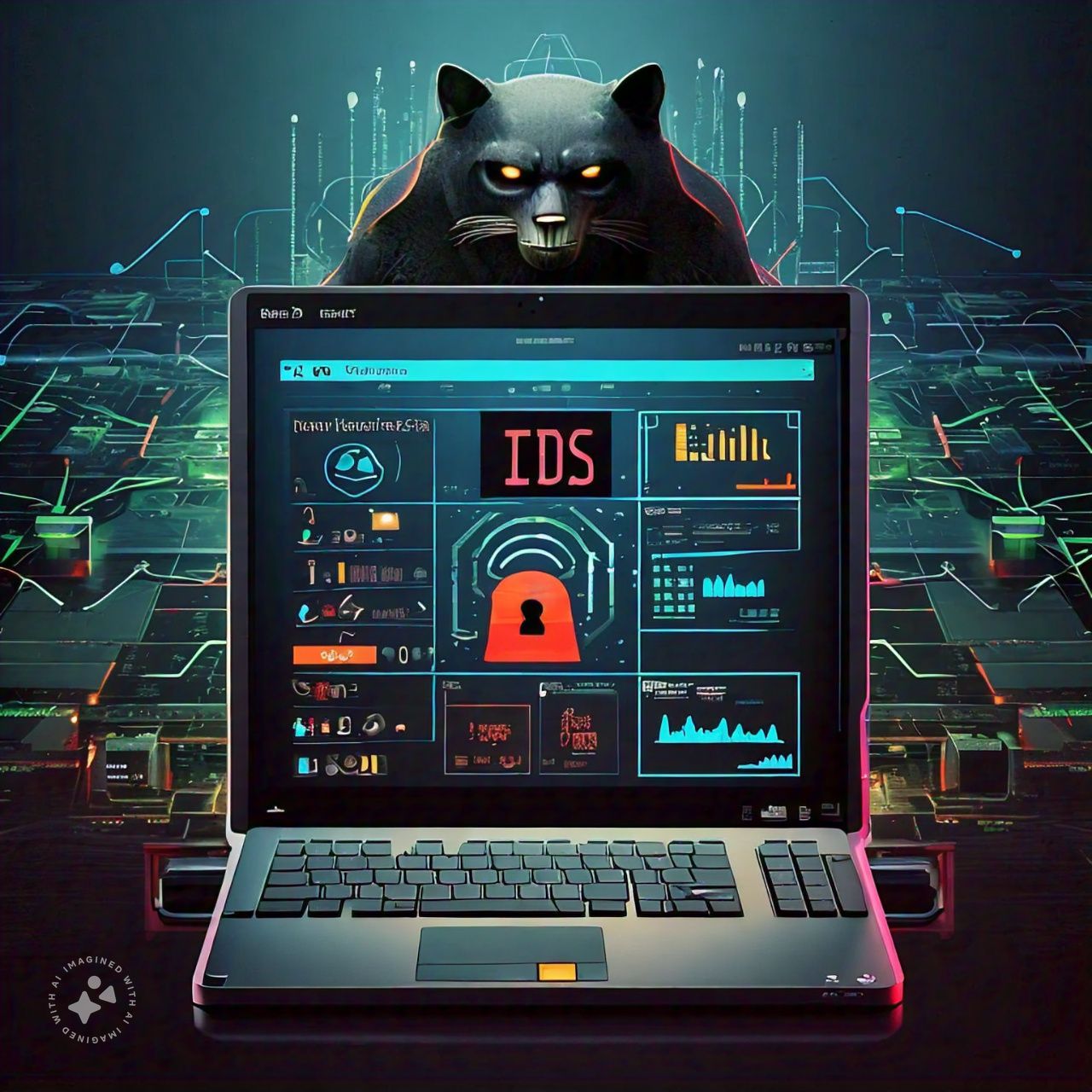 By: John Abhilash / August 6, 2024
By: John Abhilash / August 6, 2024
Looking to secure your digital premises and protect your confidential data from unauthorized access? Look no further! In this article, we bring you 10 fascinating intrusion detection system examples that will blow your mind and provide you with the ultimate protection you need.
From advanced network traffic analysis to real-time threat detection, these examples showcase the cutting-edge technology and innovative solutions offered by intrusion detection systems. Whether you’re a small business owner or a large enterprise, these systems can help you identify and respond to security breaches in real-time, ensuring that your sensitive information remains safe from cyber threats.
How intrusion detection systems work?
Intrusion detection systems (IDS) are a critical component of modern cybersecurity infrastructure. These systems are designed to monitor network traffic, system activity, and other indicators of potential security breaches, and alert administrators to any suspicious or malicious activity. The primary function of an IDS is to detect, analyze, and respond to security threats in real-time, allowing organizations to quickly mitigate the impact of an attack and protect their sensitive data and resources.
At the core of an IDS is a set of rules or algorithms that analyze various data sources, such as network packets, system logs, and user behavior, to identify patterns indicative of an intrusion. These systems can be configured to monitor a wide range of activities, from unauthorized access attempts and unusual traffic patterns to the execution of malicious code and the exfiltration of sensitive data. By continuously monitoring these indicators, an IDS can detect and respond to threats before they can cause significant damage to the organization.
When an IDS detects a potential security breach, it can trigger a range of actions, such as generating alerts, blocking malicious traffic, or initiating automated incident response procedures. This allows security teams to quickly investigate the issue, identify the root cause, and implement appropriate countermeasures to mitigate the threat. Additionally, many IDS solutions integrate with other security tools, such as firewalls, security information and event management (SIEM) systems, and security orchestration and automated response (SOAR) platforms, to enhance the overall effectiveness of the organization’s cybersecurity posture.
Types of intrusion detection systems
Intrusion detection systems can be broadly classified into several categories based on their deployment, detection methods, and the types of threats they are designed to address. The most common types of IDS include:
NIDS are deployed at strategic points within a network infrastructure, such as network switches, routers, or dedicated appliances, to monitor and analyze network traffic. These systems examine packets in real-time, looking for patterns or signatures that indicate malicious activity, such as network-based attacks, unauthorized access attempts, and data exfiltration. NIDS can provide a comprehensive view of the network and help organizations detect and respond to a wide range of security threats.
HIDS are installed directly on individual hosts, such as servers, workstations, or mobile devices, to monitor and analyze system-level activity. These systems can detect and alert on various events, including changes to critical system files, the execution of suspicious processes, and the use of privileged user accounts. HIDS are particularly useful for protecting against insider threats, malware infections, and other host-based security incidents.
WIDS are designed to monitor and secure wireless network environments, detecting and responding to threats such as rogue access points, unauthorized client connections, and wireless-based attacks. These systems typically use a combination of sensors, software, and specialized algorithms to continuously scan the wireless airspace, identify anomalies, and alert security teams to potential security breaches.
Collaborative based intrusion detection systems (CIDS)
CIDS are designed to monitor and secure cloud-based infrastructure, including software-as-a-service (SaaS) applications, infrastructure-as-a-service (IaaS) platforms, and platform-as-a-service (PaaS) environments. These systems leverage cloud-native technologies and scalable infrastructure to provide comprehensive visibility and security for organizations’ cloud-based assets, helping to detect and respond to cloud-specific threats, such as misconfigured cloud resources, unauthorized access, and data leaks.
The choice of IDS type(s) will depend on the specific security requirements, infrastructure, and threat landscape of an organization. Many organizations may employ a combination of these IDS types to provide a more comprehensive and layered security approach.
Network-based intrusion detection systems (NIDS) examples
Network-based intrusion detection systems (NIDS) are widely adopted by organizations of all sizes to protect their network infrastructure from a wide range of security threats. Here are some examples of NIDS that have proven to be effective in real-world deployments:
Cisco Stealthwatch is a comprehensive NIDS solution that provides advanced network traffic analysis and threat detection capabilities. It uses machine learning and behavioral analytics to identify anomalies and suspicious activities within the network, allowing organizations to quickly detect and respond to security incidents. Stealthwatch integrates with other Cisco security products, such as firewalls and identity services, to provide a unified security solution.
Snort is an open-source, rule-based NIDS that is widely used by organizations of all sizes. It is known for its robust detection capabilities, flexibility, and extensive community support. Snort can analyze network traffic in real-time, detect a wide range of threats, and generate alerts to notify security teams of potential security breaches. It is highly customizable and can be integrated with other security tools to enhance its functionality.
Zeek, previously known as Bro, is an open-source NIDS that focuses on providing comprehensive network visibility and security monitoring. It analyzes network traffic in real-time and generates detailed logs and intelligence that can be used to detect and investigate security incidents. Zeek is particularly useful for organizations with complex network environments, as it can handle high-volume traffic and provide in-depth analysis of network activity.
These are just a few examples of the many NIDS solutions available in the market. Each of these systems has its own unique features, strengths, and use cases, and the choice of NIDS will depend on the specific requirements and constraints of the organization.
Host-based intrusion detection systems (HIDS) examples
Host-based intrusion detection systems (HIDS) play a crucial role in protecting individual hosts, such as servers, workstations, and mobile devices, from security threats. Here are some examples of HIDS that have proven to be effective in real-world deployments:
Tripwire is a well-known HIDS that focuses on file integrity monitoring. It tracks changes to critical system files and directories, alerting administrators to any unauthorized modifications that could indicate a security breach. Tripwire is particularly useful for protecting against malware infections, insider threats, and configuration drift in mission-critical systems.
OSSEC is an open-source, host-based intrusion detection system that provides a wide range of security features, including log analysis, file integrity monitoring, and real-time alerting. It can be deployed on a variety of operating systems, including Windows, Linux, and macOS, making it a versatile solution for organizations with heterogeneous IT environments. OSSEC is known for its robust detection capabilities and its ability to integrate with other security tools.
Falcon Endpoint Protection, developed by CrowdStrike, is a comprehensive HIDS solution that combines advanced endpoint detection and response (EDR) capabilities with threat intelligence and machine learning. It monitors host-level activity, detects and responds to threats in real-time, and provides detailed forensic data to help security teams investigate and remediate security incidents. Falcon Endpoint Protection is particularly useful for organizations that need to protect against sophisticated, targeted attacks.
These HIDS examples demonstrate the diverse range of solutions available to organizations looking to enhance the security of their individual hosts. Each system has its own unique features and use cases, and the choice of HIDS will depend on the specific security requirements and infrastructure of the organization.
Wireless intrusion detection systems (WIDS) examples
Wireless intrusion detection systems (WIDS) are critical for organizations that rely on wireless network infrastructure to support their operations. Here are some examples of WIDS that have proven to be effective in real-world deployments:
AirMagnet WiFi Analyzer is a comprehensive WIDS solution that provides real-time monitoring and analysis of wireless network traffic. It can detect and identify a wide range of wireless threats, including rogue access points, unauthorized client connections, and wireless-based attacks. AirMagnet WiFi Analyzer also offers features such as spectrum analysis, performance monitoring, and compliance reporting to help organizations maintain a secure and optimized wireless environment.
Cisco Meraki Wireless is a cloud-managed WIDS solution that provides comprehensive wireless security and visibility. It can detect and mitigate a variety of wireless threats, such as rogue access points, client misassociations, and wireless attacks. Cisco Meraki Wireless also offers features like user and device fingerprinting, location tracking, and automated remediation to help organizations maintain a secure and compliant wireless network.
Aruba ClearPass is a WIDS solution that combines wireless intrusion detection and prevention with advanced network access control capabilities. It can detect and respond to a wide range of wireless threats, including unauthorized access points, client devices, and wireless attacks. Aruba ClearPass also provides features like user and device profiling, guest access management, and policy enforcement to help organizations maintain a secure and compliant wireless network.
These WIDS examples demonstrate the diverse range of solutions available to organizations looking to secure their wireless network infrastructure. Each system has its own unique features and use cases, and the choice of WIDS will depend on the specific security requirements and wireless network architecture of the organization.
Cloud-based intrusion detection systems (CIDS) examples
As organizations continue to migrate their infrastructure and applications to the cloud, the need for effective cloud-based intrusion detection systems (CIDS) has become increasingly important. Here are some examples of CIDS that have proven to be effective in real-world deployments:
Amazon GuardDuty is a CIDS offered as a service by Amazon Web Services (AWS). It uses machine learning and threat intelligence to continuously monitor and analyze activity within an organization’s AWS environment, detecting and responding to a wide range of security threats, such as unauthorized access, malicious activity, and data exfiltration. GuardDuty integrates with other AWS security services, making it a seamless and scalable solution for organizations operating in the cloud.
Microsoft Defender for Cloud (formerly known as Azure Security Center) is a CIDS that provides comprehensive security management and threat protection for cloud-based resources. It offers advanced threat detection, continuous security assessment, and real-time security recommendations to help organizations secure their cloud infrastructure and applications. Defender for Cloud integrates with other Microsoft security products, providing a unified security solution for organizations using the Microsoft cloud ecosystem.
Google Cloud Security Command Center is a CIDS that provides a centralized view of an organization’s security and risk posture across its Google Cloud Platform (GCP) resources. It offers features such as asset inventory, security health analysis, and threat detection to help organizations identify and mitigate security risks in their cloud environment. Security Command Center also integrates with other Google Cloud security services, enabling a comprehensive and streamlined approach to cloud security.
These CIDS examples demonstrate the growing importance of cloud-based security solutions in today’s digital landscape. As organizations continue to adopt cloud technologies, the need for effective CIDS that can provide visibility, detection, and response capabilities across cloud-based infrastructure and applications will only continue to increase.
Intrusion detection systems for specific industries
Intrusion detection systems (IDS) play a critical role in securing various industries, each with its own unique security requirements and threat landscape. Here are some examples of IDS solutions tailored for specific industries:
Healthcare:
In the healthcare industry, patient data privacy and the protection of sensitive medical information are of paramount importance. IDS solutions like Cyphon and Splunk for Healthcare are designed to monitor and secure healthcare IT infrastructure, detecting and responding to threats such as unauthorized access, data breaches, and ransomware attacks. These IDS solutions often integrate with electronic health record (EHR) systems and medical devices to provide comprehensive security coverage.
The financial industry is a prime target for cyber attackers due to the high value of the data and transactions involved. IDS solutions like FireEye Network Security and Darktrace for Financial Services are tailored to detect and respond to financial-specific threats, such as fraudulent transactions, insider trading, and advanced persistent threats (APTs). These IDS solutions leverage machine learning and behavioral analytics to identify anomalies and suspicious activities within the financial network.
Government:
Government agencies often handle sensitive national security information and critical infrastructure, making them a prime target for sophisticated cyber attacks. IDS solutions like Splunk for Government and Palo Alto Networks Next-Generation Firewall are designed to meet the stringent security requirements of government organizations. These IDS solutions can detect and respond to a wide range of threats, including nation-state attacks, data exfiltration, and infrastructure disruptions, while ensuring compliance with industry regulations and government standards.
These industry-specific IDS examples demonstrate the importance of tailoring security solutions to the unique needs and challenges of different sectors. By leveraging specialized IDS capabilities, organizations can enhance their overall cybersecurity posture and better protect their most valuable assets from targeted attacks.
While commercial IDS solutions offer advanced features and enterprise-grade support, the open-source community has also developed a range of effective and cost-effective intrusion detection systems. Here are some examples of open-source IDS that have gained widespread adoption:
Suricata is a powerful, open-source network intrusion detection and prevention system (NIDS/NIPS) that can analyze network traffic in real-time to detect and respond to a wide range of security threats. It is known for its high-performance capabilities, extensive rule set, and strong community support. Suricata is widely used by organizations of all sizes, from small businesses to large enterprises, due to its flexibility and scalability.
As mentioned earlier, Zeek (formerly known as Bro) is an open-source network security monitor that provides comprehensive network visibility and security analysis. It is particularly useful for organizations with complex network environments, as it can handle high-volume traffic and provide in-depth analysis of network activity. Zeek is highly customizable and can be integrated with a variety of other security tools to enhance its functionality.
OSSEC is an open-source, host-based intrusion detection system that provides a wide range of security features, including log analysis, file integrity monitoring, and real-time alerting. It can be deployed on a variety of operating systems, making it a versatile solution for organizations with heterogeneous IT environments. OSSEC is known for its robust detection capabilities and its ability to integrate with other security tools.
These open-source IDS examples demonstrate the availability of high-quality, cost-effective security solutions that can complement or even replace commercial offerings. While open-source IDS may require more technical expertise to deploy and maintain, they offer organizations the flexibility to customize and integrate them into their existing security infrastructure, often at a lower cost than proprietary solutions.
Conclusion and future trends in intrusion detection systems
Intrusion detection systems have evolved significantly over the years, becoming an essential component of modern cybersecurity strategies. From network-based and host-based systems to wireless and cloud-based solutions, the range of IDS options available to organizations has expanded, allowing them to tailor their security approach to their specific needs and threat landscape.
As the cybersecurity landscape continues to evolve, the future of intrusion detection systems is likely to be shaped by several key trends:
Increased Adoption of AI and Machine Learning: IDS solutions are increasingly incorporating advanced AI and machine learning algorithms to enhance their threat detection and response capabilities. These technologies can help IDS systems identify sophisticated, zero-day threats and adapt to changing attack patterns more effectively.
Integrated Security Platforms: IDS solutions are becoming more integrated with other security tools, such as firewalls, SIEM systems, and SOAR platforms, to provide a more comprehensive and coordinated security solution. This integration can improve the overall effectiveness of an organization’s cybersecurity posture.
Expansion of Cloud-based and Hybrid IDS: As more organizations migrate their infrastructure and applications to the cloud, the demand for cloud-based and hybrid IDS solutions will continue to grow. These systems can provide scalable, cost-effective, and centralized security monitoring for cloud-based assets.
Increased Focus on IoT and Industrial Control Systems Security: With the proliferation of connected devices and the growing importance of industrial control systems, IDS solutions will need to adapt to monitor and secure these specialized environments, which often have unique security requirements and vulnerabilities.
Emphasis on Threat Intelligence and Incident Response: IDS solutions will increasingly incorporate threat intelligence data and integrate with incident response workflows to enable faster and more effective detection, investigation, and remediation of security incidents.
By staying informed about these trends and exploring the diverse range of IDS examples showcased in this article, organizations can make informed decisions about the best intrusion detection systems to protect their digital assets and stay one step ahead of cyber threats.
Check Out Other Resources : Master ASPM :Build a secure strategy







Leave a Comment